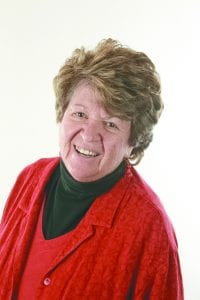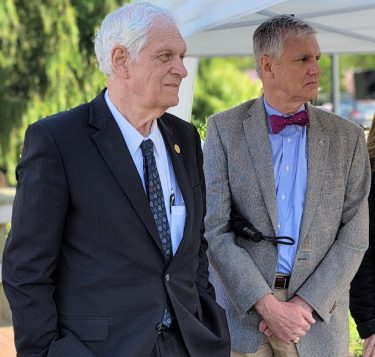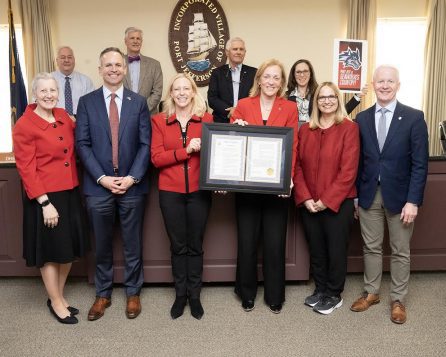By Heidi Sutton
From news and feature articles, sports stories, photography, editorial cartoons, special supplements, ad projects and classifieds, TBR News Media took home 22 awards from the 2023 New York Press Association’s Better Newspaper Contest this year. The winners were announced during NYPA’s annual Spring Conference at the Gideon Putnam Hotel in Saratoga Springs on April 26 and 27.
Over 140 newspapers in New York State took part in the annual event celebrating newspaper excellence with 2,530 entries competing for 379 awards in 70 categories covering the editorial, advertising and circulation efforts of the state’s dailies and weeklies. Members of the Tennessee Press Association were tasked with judging this year’s contest.
TBR News Media earned 175 total contest points including six first-place awards, two-second place awards and seven third-place awards, placing it among the top 5 winners.

In a tight competition, reporter Steven Zaitz won third place in the Best Sports Writer of the Year category. “This writer does a good job of putting the reader into the action. And I like that he doesn’t take 20 words to say what he can say in 10. I liked his work very much,” commented the judge after seeing samples of his work.
A talented photographer as well, Zaitz also captured two first place awards in the Best Sports Action Photo category (Division 1 & 3) as well as an Honorable Mention, second place for Best Front Page, and first place in the Best Feature Photo category with a photo titled “Frozen Assets” taken at the Special Olympics Polar Plunge at Cedar Beach in Mount Sinai last November. “This package has a variety of images with great expression in the subjects faces. I can simply look at the photos and tell these people were cold, but had a warmth in their hearts for this special cause,” said the judge.
Zaitz also received an Honorable Mention for Best Sports Action Photo and Best Sports Feature Photo.
Reporter Bill Landon won a second place award in the Best Feature Photo category with a photo titled “Glittering Revival” taken at the Tesla Science Center in Shoreham during its annual Holiday Lighting event last December, two weeks after the Center’s devastating fire. “This photo shines in the competition in more ways than one … from her facial expression to the unique glow in the photo. It’s an obvious winner!” said the judge.
Landon also received an Honorable Mention for Best Sports Action Photo.

Artist Kyle Horne nabbed first place in the Best Editorial Cartoon category for his creative illustration depicting Port Jefferson Village government’s attempts to address flooding.
Former editor Raymond Janis captured several awards as well including third place for Best News Story for an article on Community Choice Aggregation (CCA) and was a Sharon R. Fulmer Award for Community Leadership third place winner for his coverage of board meetings at the Port Jefferson Village Hall. The judge commented, “You can’t beat a little ‘outrage’ media coverage to make public officials change their tune ASAP. The power of the press and people is STRONG!”
He also shared a third place award with reporter Lynn Hallarman for Best Coverage of Local Government which included a sampling of stories about issues in the Town of Brookhaven and the Village of Port Jefferson. “Excellent layout. Reports are eye-catching and cover a variety of controversial local government topics,” wrote the judge.
In addition, Janis shared an Honorable Mention with reporter Nasrin Zahed in the Best Obituaries category for an article celebrating the full life of Judith “Judi” Betts. “Judi seems like someone you would like to meet,” commented the judge.
Former editor Rita J. Egan snagged third place in the Best Feature Story category for her heartwarming article about a memorial bench from Connecticut that washed ashore at West Meadow Beach in Stony Brook and the attempts to find the owner. The judge commented, “Amazing the things you find during a walk on the beach.”
Classifieds Director Sheila Murray won first place in the Best Classified Advertising category with the judge commenting, “Good looking black and white page layout for classifieds. Could easily find the classified ads on the pages. Not hidden among the ads,” and Art/Production Director Beth Heller Mason received an Honorable Mention for Best Small Space Ad.
TBR News Media’s graduation supplement won first place for Best Special Sections/Niche Publications in Newsprint. “Beautiful work on this keepsake. Dedication to the project shows in the completed product,” wrote the judge.
The newspaper’s annual Summer Times supplement by editor Heidi Sutton received a third place award in the same category with the judge commenting, “The cover is fun and makes you want to look even further. Very nice overall.”
TBR News Media also won third place for Best Innovative Ad Project for its People of the Year supplement and an Honorable Mention for its Salute to Women supplement in the Best Special Section: Advertising category. “Loved this entry and the idea of a salute to women from all walks of life. Just enough info on each woman. Good layout and presentation,” said the judge.
“Probably nothing is more professionally gratifying than being commended by one’s colleagues,” said TBR News Media publisher Leah Dunaief. “We are deeply appreciative for this remarkable total of 22 awards we were given at the Better Newspaper Contest last weekend. The awards run the gamut from excellent articles to outstanding ads to attractive design to community leadership. Congrats to the talented and hard working staff of Times Beacon Record News Media.”
For a full list of winners, visit nynewspapers.com/nypa/better-newspaper-contest/









































